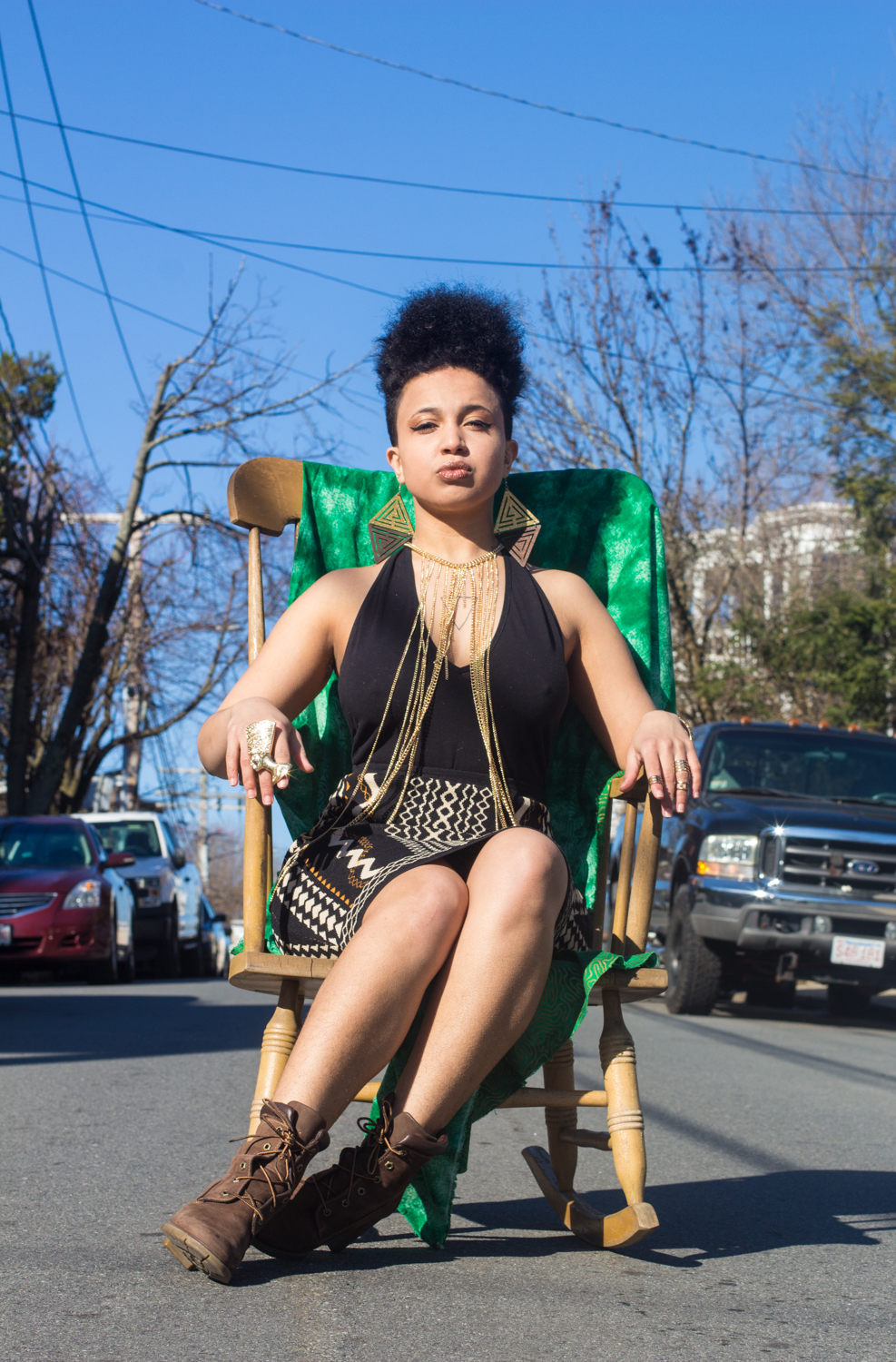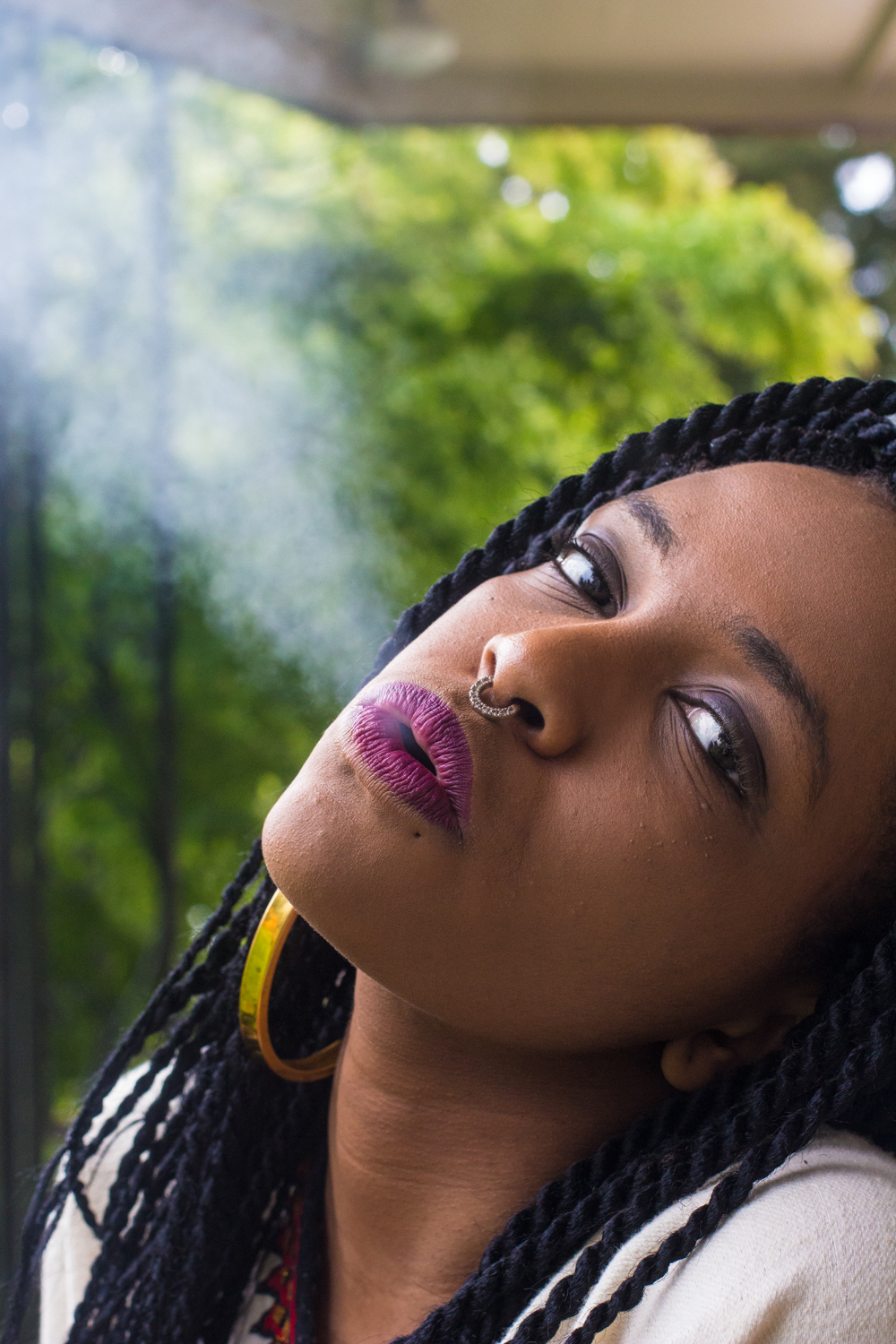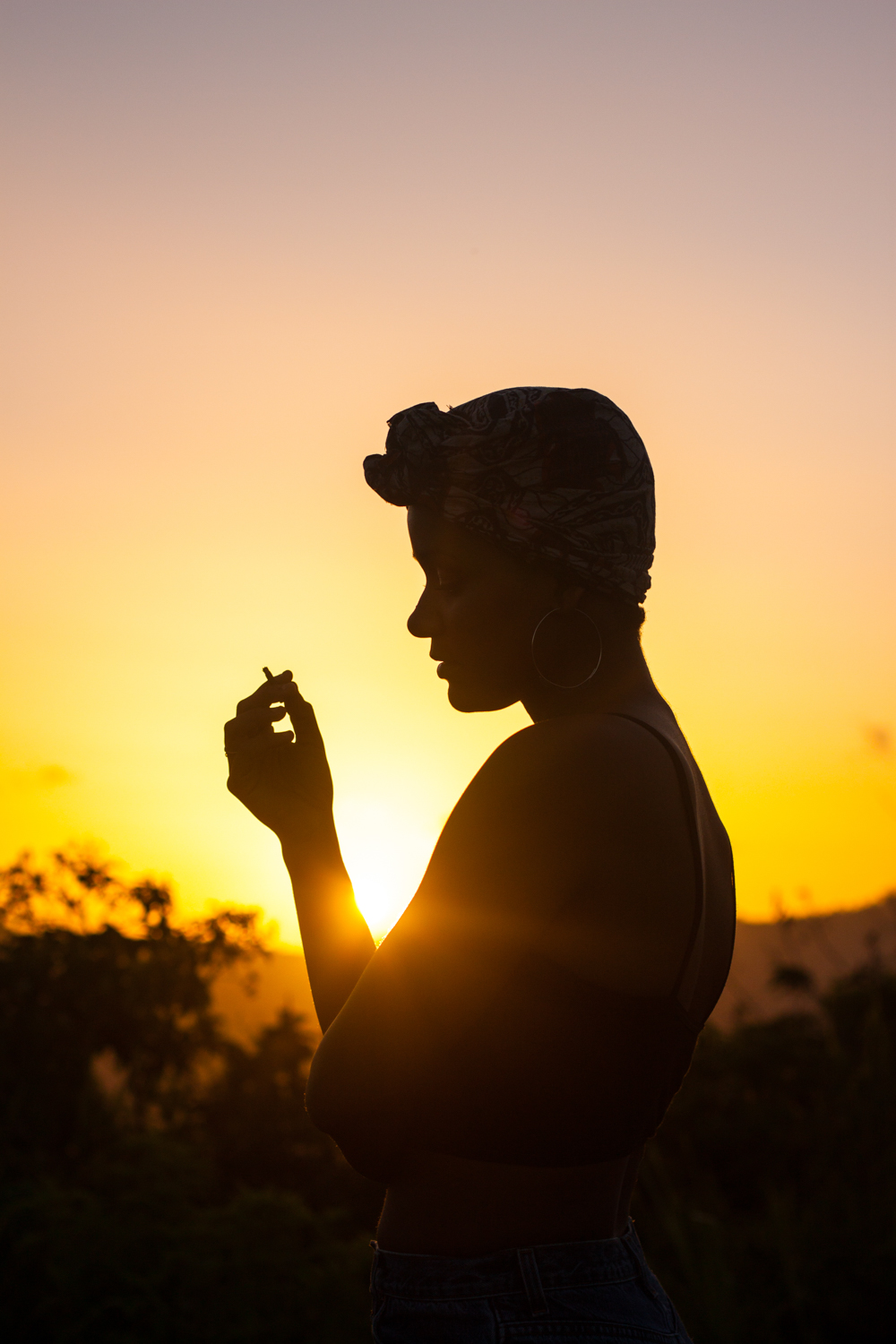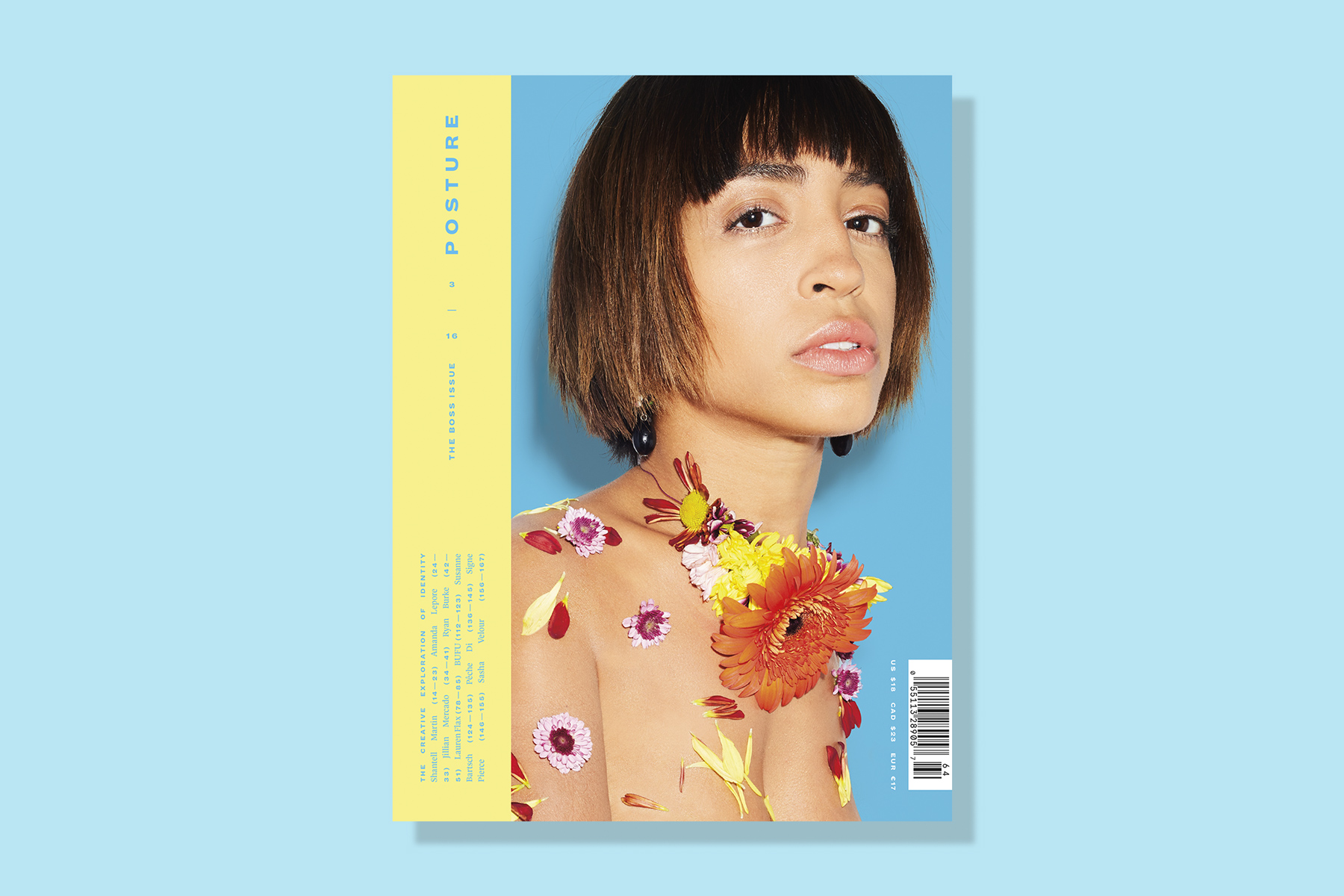Mikael Chukwuma Owunna is a queer Nigerian-Swedish American photographer and writer based in Washington D.C. He dedicates his creative efforts to elevating marginalized communities. As a Fulbright scholar in Taiwan, his collaborative art and photography project, I am Atayal!, was a collaboration with Taiwanese aboriginal (Atayal) youth and Professor Christine Yeh of USF, that was exhibited in a full-floor exhibition at the National Taiwan Museum in 2014.
Owunna’s latest focus is photographing LGBTQ African immigrants in the US, Canada, Trinidad and Europe for his documentary project titled Limit(less). His mission is to bridge the “gap” between LGBTQ and African identities. He explains that “the purpose of this project is to debunk the myth that being LGBTQ is ‘un-African.'” He continues, “this line of thinking… is patently false and exists as an artifact of colonization. Identities which would now be categorized as “LGBTQ” have always existed, and being LGBTQ does not make us ‘less’ African.” He photographs members of the community and interviews them to learn about their unique perspectives, below is a sample of his project, and you can access the full work here.
For more on the project, follow them on Tumblr, Instagram, Facebook and Flickr. You are also encouraged to Donate to Support the Project.
Kim
Q. What’s your name, country of origin, ethnicity, pronouns, and how do you identify in terms of your LGBTQ identity?
My name is Kim, I’m a trans woman from Burundi. I answer to she.
Q. How would you describe your style?
On my best days, i’m serving dementor who has eaten all the souls she needs to get her life back lol. But i also channel some pink princess looks when im feeling cute and deceptive. It really depends on what character i want to be and the story i want to tell that day.
Q. How do you think your style incorporates/blends elements of your African and LGBTQ identity?
I think I blend my queer identity and my african identity in my style through storytelling. I love reading east african stories about warrior princesses and powerful witches (who are often trans and queer) leading their army in wars against the colonizers and slaying. I think of those women when i’m walking down the street, bracing for a comment or a look or finger pointed at me, i think of how they fought to keep their lands and bodies. Everytime i step outside of my house, i am at war with white supremacy so my looks are some sort of armours that i wear.
Tyler
Q. What’s your name, country of origin, ethnicity, pronouns, and how do you identify in terms of your LGBTQ identity?
My name is Tyler. I’m a Kenyan-Somali-Canadian. Pronouns, he and him. I identify as queer.
Q. How would you describe your style?
I would describe my style as mysterious. Not mysterious in terms of being confusing to others, although that very well may be the case. Rather, my style is mysterious to me. I’m always surprised by what I end up leaving the house in, but it also almost always puts a smile on my face.
Q. How do you think your style incorporates/blends elements of your African and LGBTQ identity?
As the cliche goes, my style is a way for me to express myself – and my multiple identities, those discovered and undiscovered, all play into that. When I wear my kikoy I feel like I am on the coast of Kenya being enriched by the sun and bewitched by the aroma of spices. When I wear my Kenya bracelet, I feel connected to the growth and prosperity of home. When I wear my traditional necklaces I feel the halo of my ancestors resting around my neck and upon my shoulders. When I wear my yellow bracelet, I feel connected to the dirt road near my home in Nairobi where I found it abandoned.
As per my queer identity, my style is not regulated by arbitrary gender norms. If I want to wear short shorts and a dashiki then I do. I guess my queerness, in part, fuels my ability to transcend the expected. And that is what I try to do with my style, transcend the expected and, in many ways, come home to myself.
Kaamila
Q. What’s your name, country of origin, ethnicity, pronouns, and how do you identify in terms of your LGBTQ identity?
My name is Kaamila. Currently, I use she pronouns and they pronouns. I am Somali American, biracial, and Black. I identify as a bisexual queer dyke and a fluid femme and, at the moment, a womxn. I claim my identities loudly and proudly, my small personal acts of political resistance against the ways in which biphobia, femmephobia, and misogyny show up in my life and in society. And simultaneously- maybe it’s because I grew up in a biracial, bicultural household, constantly remolding myself to survive; maybe it’s because I’m a Gemini and the stars said it would be so- it’s hard to feel like any word holds all of me or I fit quite right in any place or space. I’m always busting out binaries and sliding along spectrums and gallivanting across the vast galaxy of gender and desire and identity.
Q. How would you describe your style?
My style is eclectic and all over the place, manifesting the multitudes within me. I rock my fro, I pile my headwraps high, and I consider myself a part-time hijabi. I occasionally do the dapper look, with the bowtie and the oxfords to match. But I love my tims and my kicks, sometimes paired with a snapback. At times I am channeling an earthy flower child, or mermaid queen, or warrior womxn, or goddess healer, at times the ancestors and aliens and afrofuturism. I can be hello kitty cute in pink and I can be all black everything, black lipstick and black combat boots. Walking this world as a Black queer femme womxn, it is sometimes a struggle simply to survive. Some days, makeup is my war paint and accessories are my armor. Some days, I decorate and adorn myself in a ritual of affirmation of all that I am. Not simply surviving, but thriving! I could be described as gaudy, often dripping in gold, and maybe a little bit gangsta. My style can be big and bold, taking up space in a world that tells me to be small. I make myself art in a world telling me that who I am is not beautiful. But I am not above leaving the house in sweatpants and uggs. It’s wack that women’s worth is wrapped up in whether we are considered appealing to others. My style is personal, political, playful, practical. It is a mix-and-match and mashup of all of the above.
Q. How do you think your style incorporates/blends elements of your African and LGBTQ identity?
Girls and women in this society are trained to be insecure and to be consumers, fueling those who capitalize off of us hating their own bodies. In my adolescence, I had deeply internalized those messages. Add on top of that my internalized anti-Blackness, my suppressed sexuality, and the alienation I felt as a young Muslim from a mixed, immigrant family, and I was pretty much crushed by feelings of shame and self-loathing. A lot of that got channeled into how I felt about my body and how I looked. In elementary and middle school, I was mimicking my classmates’ ensembles from Limited Too, religiously plucking my eye brows and shaving my body hair, begging my white mother to take me to get my hair relaxed, attempting to lighten my skin, counting calories in the hopes that my curves would melt away, all in an attempt to distance myself from my own brown Black body.
For me, coming into my identities and becoming politicized were not just about understanding and challenging dynamics outside of myself. There was so much I had to unlearn about how I saw myself and treated myself. Even now, I have to constantly be aware of and push back against the way society’s messages show up in my own self-talk. It is work to cultivate self love in this world when living at the intersection of multiple marginalized identities. And for people of color, queer folks, women, femmes, our very bodies are the sites of so much oppression and violence. So my style- the way in which I adorn and present my body- very much becomes a tactic of survival, a political statement, and a way to celebrate my identities.
I intentionally incorporate elements into my style that I feel are aesthetically African. I dangle outlines of the continent from chains or earrings. I love beaded accessories, especially the Masai beadwork that takes me back to the handful of years I spent in Kenya as a small child. I adore African patterns and prints, and my life is so full of fabric and scarves upon scarves. I feel my femininity in particular must have been very much formed by the Somali women of my childhood and my ancestry. I love bright colors, like the dirac my aunts got decked out in for weddings, I can be very matchy-matchy, and I go absolutely gaga for gold jewelry.
The queer aspect of my fashion feels a bit harder to pin down. Maybe it’s difficult because the dominant images of queer fashion seem so limited in terms of race, class, body type, and ways of expressing gender. Certainly the way I move between masculine and feminine presentation or blend the two is part of my queerness. But even when I’m expressing full out feminine, my queerness doesn’t disappear just because someone can’t “see” it. I’m here and I’m queer, regardless of what I wear.
Brian
Q. What’s your name, country of origin, ethnicity, preferred gender pronoun, and how do you identify in terms of your LGBTQ identity?
My name is Brian, I am Rwandan by my parents but I grew up in Tanzania, Niger, Kenya, Benin and the Central African Republic. I answer to “him” and “her” and I identify as queer.
Q. How would you describe your style?
To be honest, my style will depend on my mood. It can be very classic and eurocentric to very much african and ethnic. I love to mix masculine and feminine attire in my style. I like to describe my style as “Non-binary Preppy African”.
Q. How do you think your style incorporates/blends elements of your African and LGBTQ identity?
My style definitely conveys my roots and my LGBTQ identity. I have incorporated women clothing in my wardrobe since high school as a statement asserting my denial of the binary gender identities. Later on in college, I decided to reconnect with my continent that I had left behind by appreciating and including African prints in my wardrobe and in my accessories. The evolution of my style explains the evolution of the definition of my identity, be it African or LGBTQ.
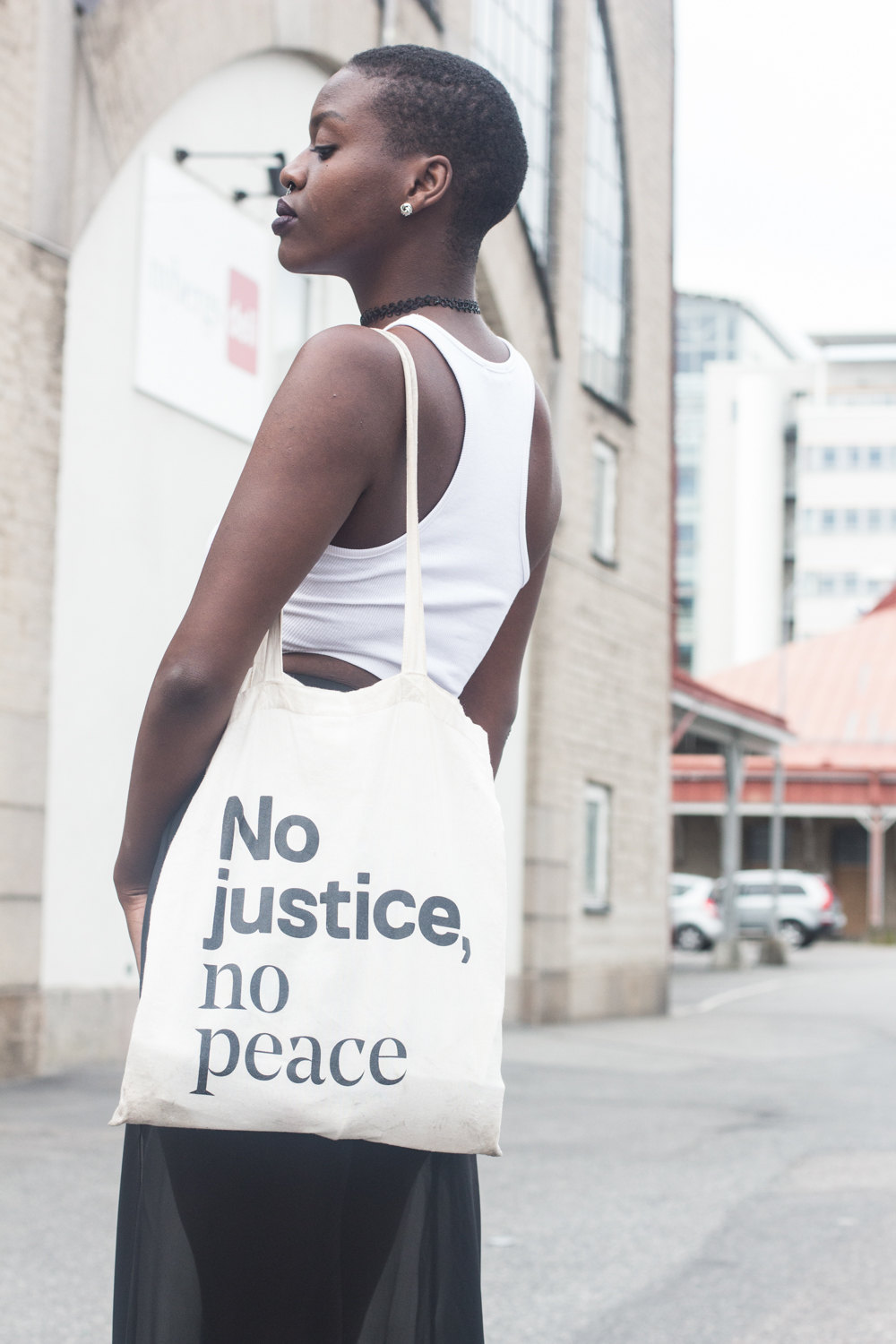
Juliet
Q. What’s your name, country of origin, ethnicity, pronouns, and how do you identify in terms of your LGBTQ identity?
My name is Juliet Atto, also called Jules, and I was born in Uganda and raised in Sweden. I mainly have roots in Uganda but also Rwanda as my grandmother was Rwandan. My ethnicity is Acholi, a minority ethnic group in northern Uganda. My pronoun is she/her and I identify as queer.
Q. How would you describe your style?
Hard to say, but I would say “edgy” with a feminine twist, or perhaps feminine with an edgy twist? A mix of street and chic with vintage elements. My style evolves over time and I like to update myself and my wardrobe every 2-3 years or so, reflecting where I am in life at that moment.
The best word to use to describe my style today is ‘carefree’. I’m very comfortable with my body and I like to show it and have fun with my style. You can definitely tell that I’m a big city girl in the clothes I wear. My outfits tend to be very modern and expressive of who I am as a person: a young carefree black queer girl!
Q. How do you think your style incorporates/blends elements of your African and LGBTQ identity?
I would say my style is quite queer in the sense that it doesn’t fit into just one box. I love tight dresses and crop tops but also sneakers, button-up shirts and leather jackets. My style is not particularly African in the traditional sense, with African prints etc., but I have elements of what I’ve seen women in my ethnic group, Acholi, wear like bright colors and long skirts. I would, however, like to incorporate more traditional African prints in my wardrobe.
Netsie
Q. What’s your name, country of origin, ethnicity, pronouns, and how do you identify in terms of your LGBTQ identity?
My name is Netsie, I am a queer Ethiopian Namibian, and my full name translates to “our gift of freedom” in Amharic and Oshiherero. I was born the year my fatherland (Namibia) got independence from apartheid-ruled South Africa so although my first name is Ethiopian, the meaning(Netsanet: freedom) is a reference to Namibia. My ethnicity is black and I use she/her pronouns.
Q. How would you describe your style?
bell hooks has had a profound effect on my life in a number of ways. When discussing how the black woman watches film, she posits that in order to see ourselves on screen and in stories made for the white, male gaze, we must develop an inverted gaze. That changed the path of my life—I realized that I needed to become a filmmaker, and it also changed the way I saw myself, as a femme woman. From a young age, women are taught that they have no choice in who looks at them and so often, we are held responsible for what other people perceive. We are taught to be presentable, not just for business meetings, but potential friends, mates, and assaulters. At the same time, we are taught never to look threatening, or look back at the people looking at us. We are denied the verb, and forced into the noun. Fuck that. I’m a hard femme with an hourglass silhouette, a goodwill budget, and a firm grasp of anti-capitalist rhetoric. I wear whatever makes me feel comfortable and powerful and safe. I’m too clumsy to own a pair of un-ripped tights. I love wearing bold patterns that clash, things that could be pretty but aren’t, anything to remind people that when they look at me, I am looking right back at them.
Q. How do you think your style incorporates/blends elements of your African and LGBTQ identity?
Traditional Herero attire pulls from our surroundings, the animal that is most fundamental to our survival, and the colonists that sought to systematically erase every last remnant of our existence from the planet. We keep cool in the desert, pay homage to our cows, and declare that not only did you fail at wiping us out, but also, at wearing your own clothes. We took your look, hit it with some much-needed flavor, and made it our own. This cultural knowledge gave me the basis of my understanding of subversive fashion. I spent such a large part of my childhood trying to “pass” as straight that by the time I came out, I had exhausted my ability to care how most people thought of me. I dress accordingly.
Gesiye
Q. What’s your name, country of origin, ethnicity, preferred gender pronoun, and how do you identify in terms of your LGBTQ identity?
My name is Gesiye, which in Ijaw means ‘someone of truth.’ I’m Nigerian-Trinidadian, born and raised in Trinidad & Tobago. My pgp’s are she/her/hers and I identify as bisexual/queer.
Q. How would you describe your style?
As my friend Gabe recently said, it’s more of a “postmodern Angela Davis.” I mostly wear neutral colors, with the occasional head wrap or print, staying pretty comfortable and casual.
Q. How do you think your style incorporates/blends elements of your African and LGBTQ identity?
I don’t limit my African or LGBTQ identity to one form of expression, everything I wear is and can be a blend of these identities because that’s who I am and how I’m choosing to define it.

19
Q. What’s your name, country of origin, ethnicity, preferred gender pronoun, and how do you identify in terms of your LGBTQ identity?
I am Algerian, and go by he or they. Queers might call me she while I’m dancing. I never felt comfortable with the term “gay,” though I think that I used it because for a short time because it was the easiest way to identify myself, and my behavior and desire seemed to align with what I understood to be “gay:” attraction to cis, relatively masculine men. Now I identify as queer, and while I’m in a moment of serious gender questioning, I’m in a conservative work environment which pretty much demands conformity to binary gender and so questioning is pretty much where I’ll be for a while.
Q. How would you describe your style?
Queer humility? I don’t spend that much time thinking about clothes. I try to dress functionally, and I like clothes I can dance in. When I’m comfortable, I’m pretty feminine, particularly in the way that I like to hold my body as I walk or stand or speak or gesture. It’s a way of taking up space and trying to stand powerfully in my truth, though I try to do it in an inviting way. I have been comfortable with this affect for a few years, but recent changes in my work space have demanded some renegotiation and assimilation and reinvention.
Q. How do you think your style incorporates/blends elements of your African and LGBTQ identity?
This has been coming up more for me a lot lately, particularly because I spent a lot of time in Algeria recently. I think in spaces where I’m surrounded by White Men and Women with a constrained way of thinking about gender, I feel myself representing myself more by my Algerian identity. When basically any conversation worth having quickly marks me as Other, I find myself talking about my love for my Algerian family, my deen (religion), my strong connection to the place, and my desire to do work there and develop that connection into something deep and sustained.
It’s hard to confront assaults on my identity, on its authenticity and value without isolating myself, which would create a lot of problems for me. But my work is harder to question. People are surprised to hear that I want to spend more than a summer or a week in a poor African country, one that doesn’t have a very vibrant community of white expats. Right now it feels easier to be confident in talking about my work, and I feel whole and present in that way, because the people I currently spend all my time with are mostly not people with whom I can comfortably process, indulge, or develop the links between my gender, my work, and my deen.
For more information please visit mikaelowunna.com
Posture’s third print issue — The Boss Issue — is now available for purchase. This 168-page magazine features exclusive interviews with artists, theorists, activists, and nightlife icons. The conversations dive deep into ideas of leadership, success, and organizing in queer/trans/non-binary and WOC communities. This issue also represents a new design direction for Posture, one that reflects the mission and purpose of the publication.
Order your copy today through our online shop: shop.posturemag.com.



